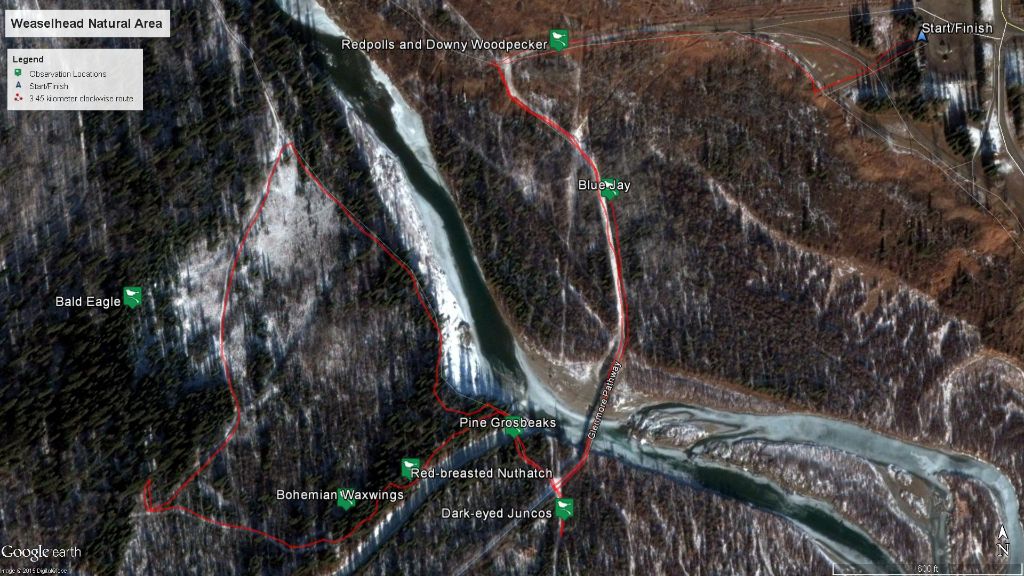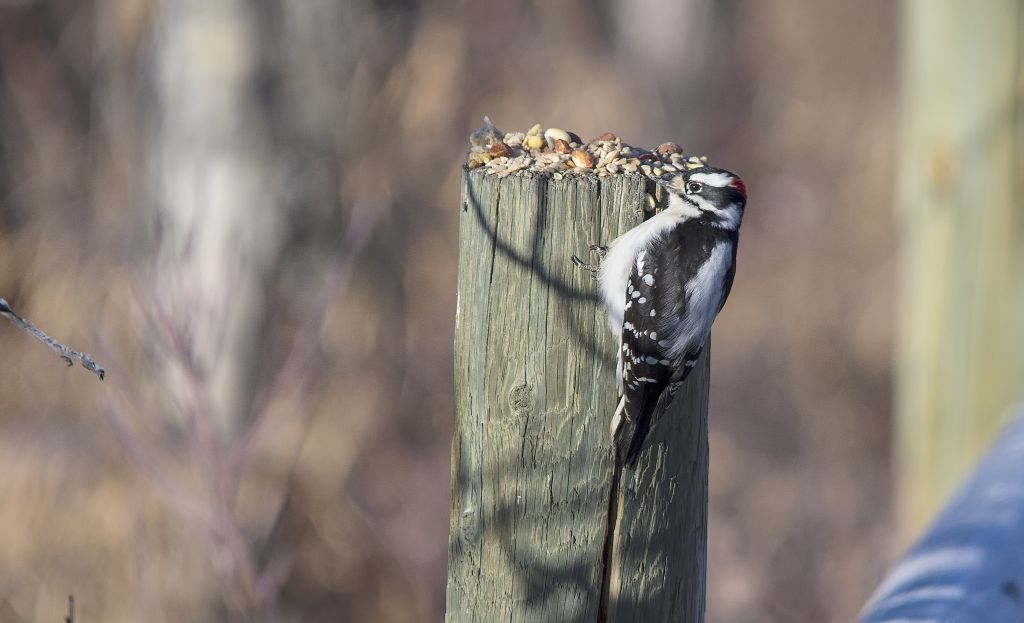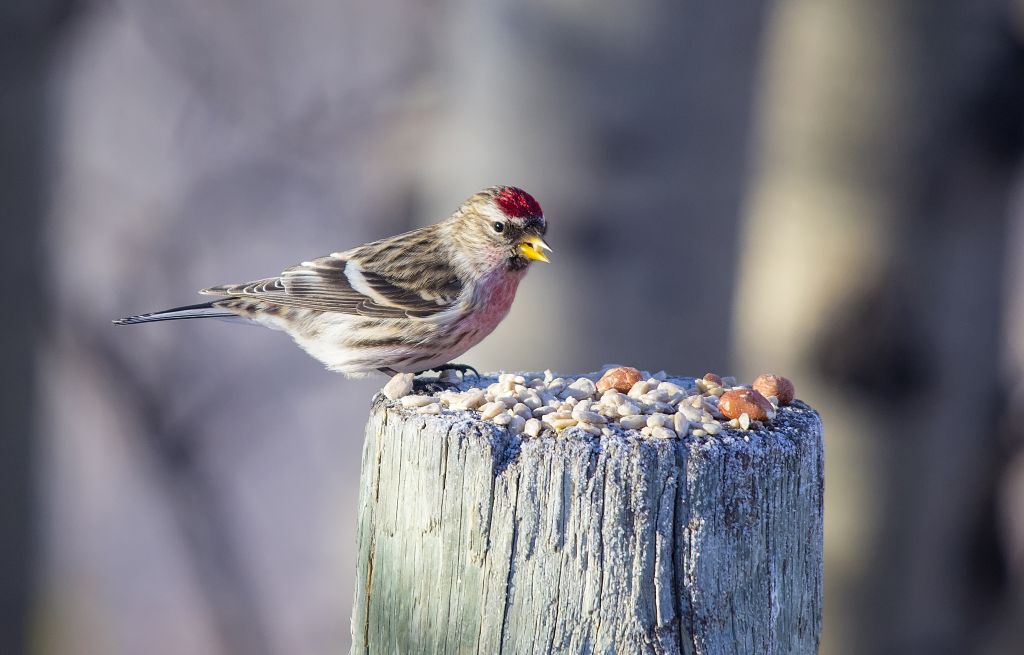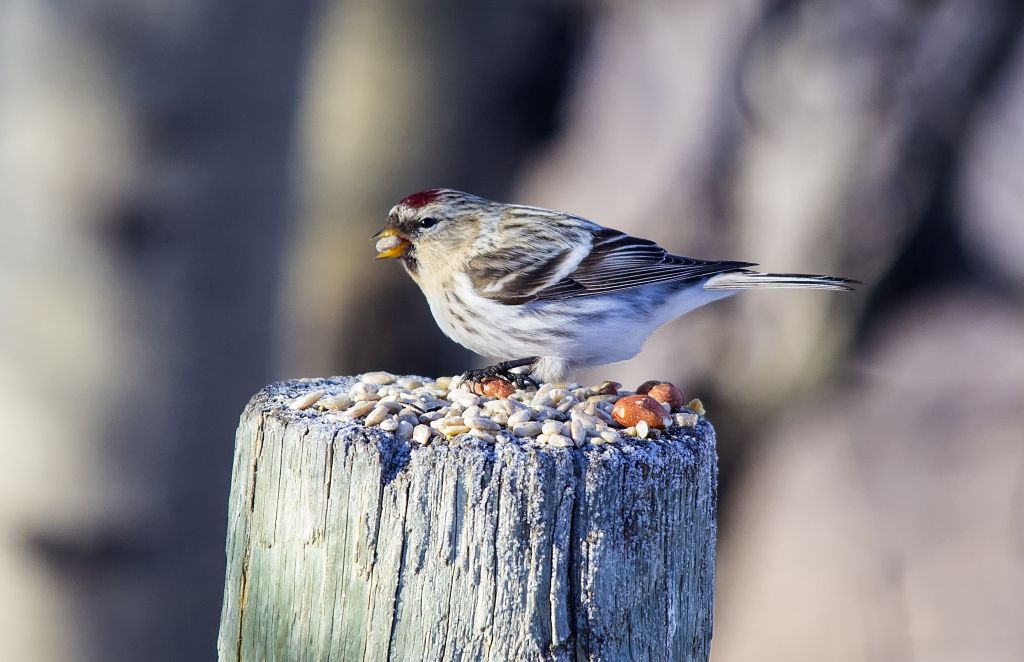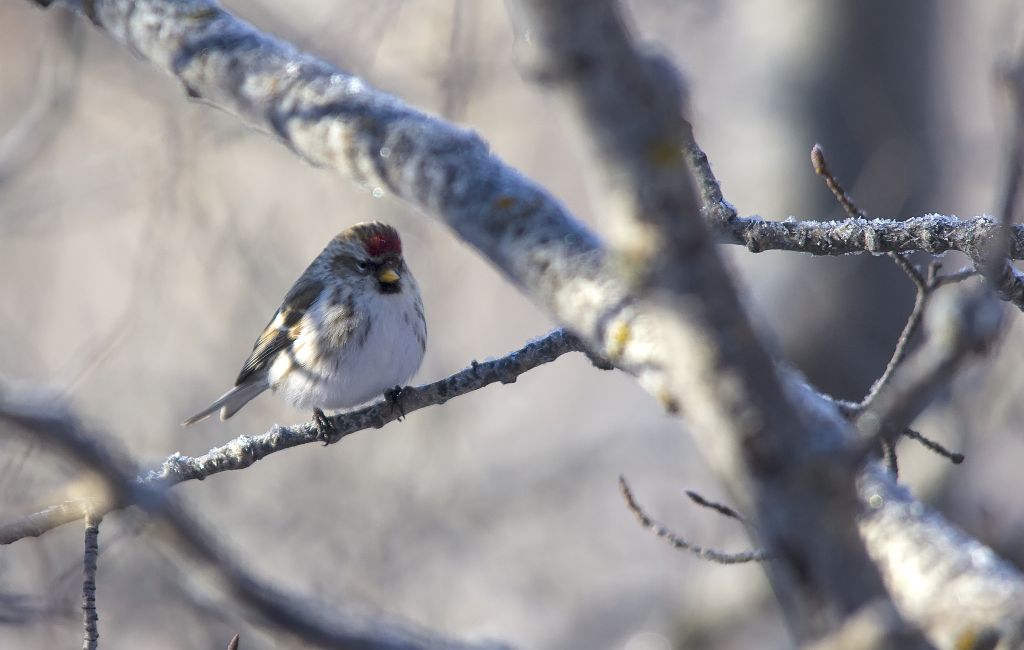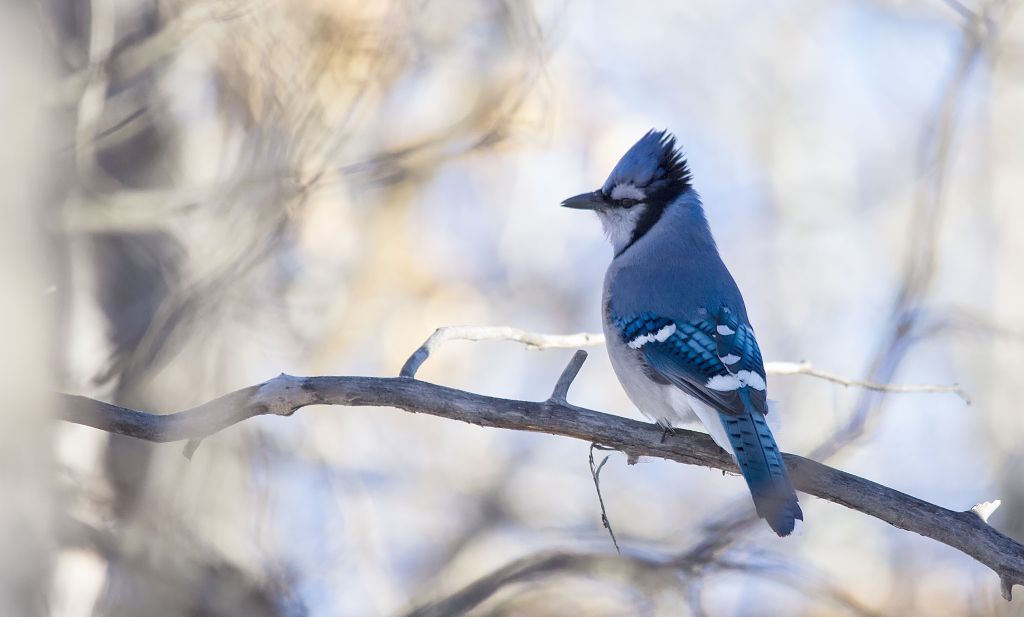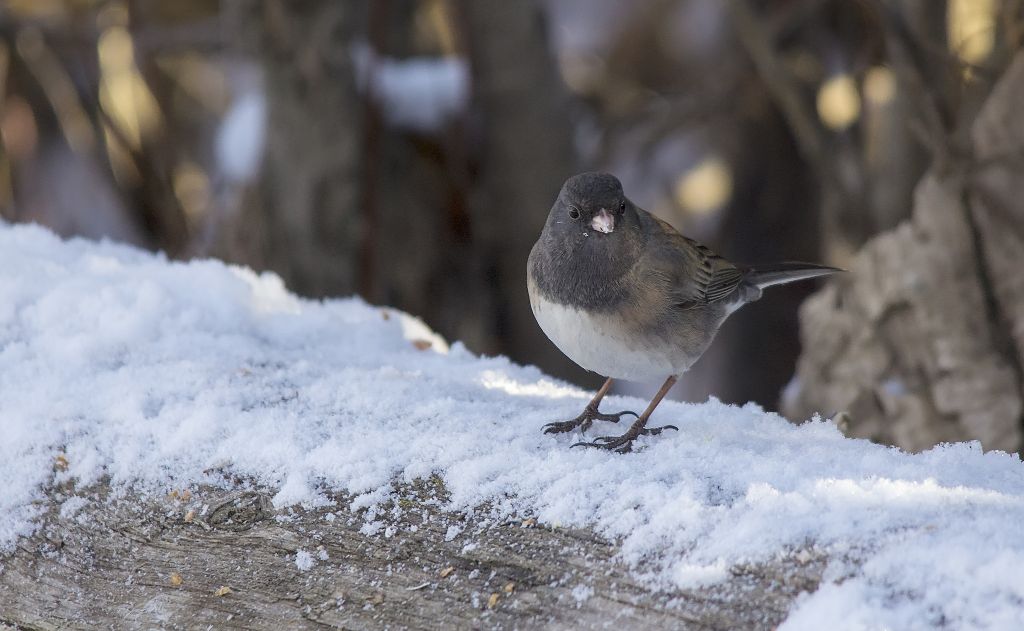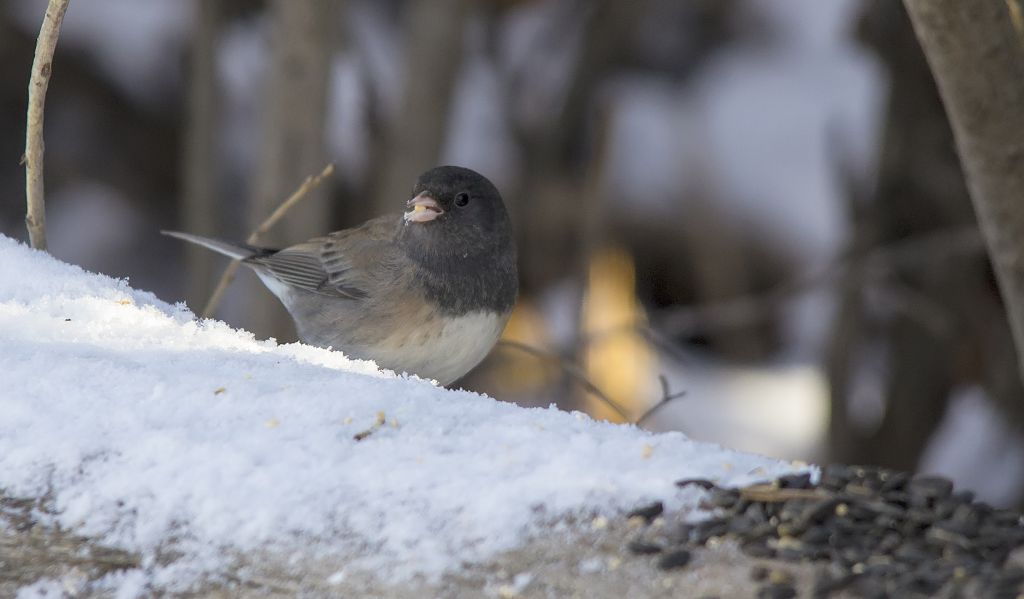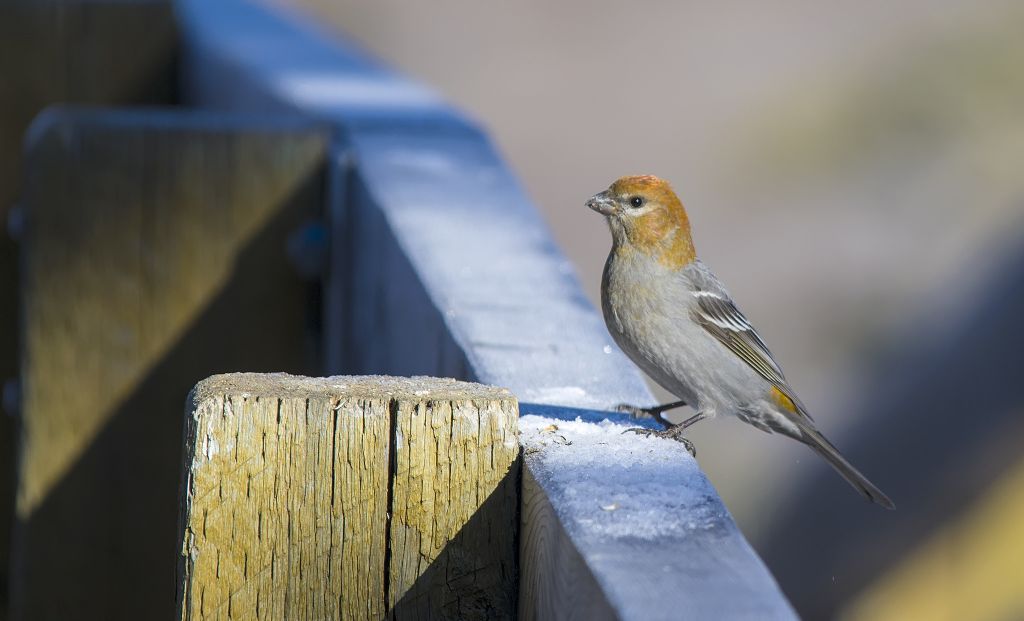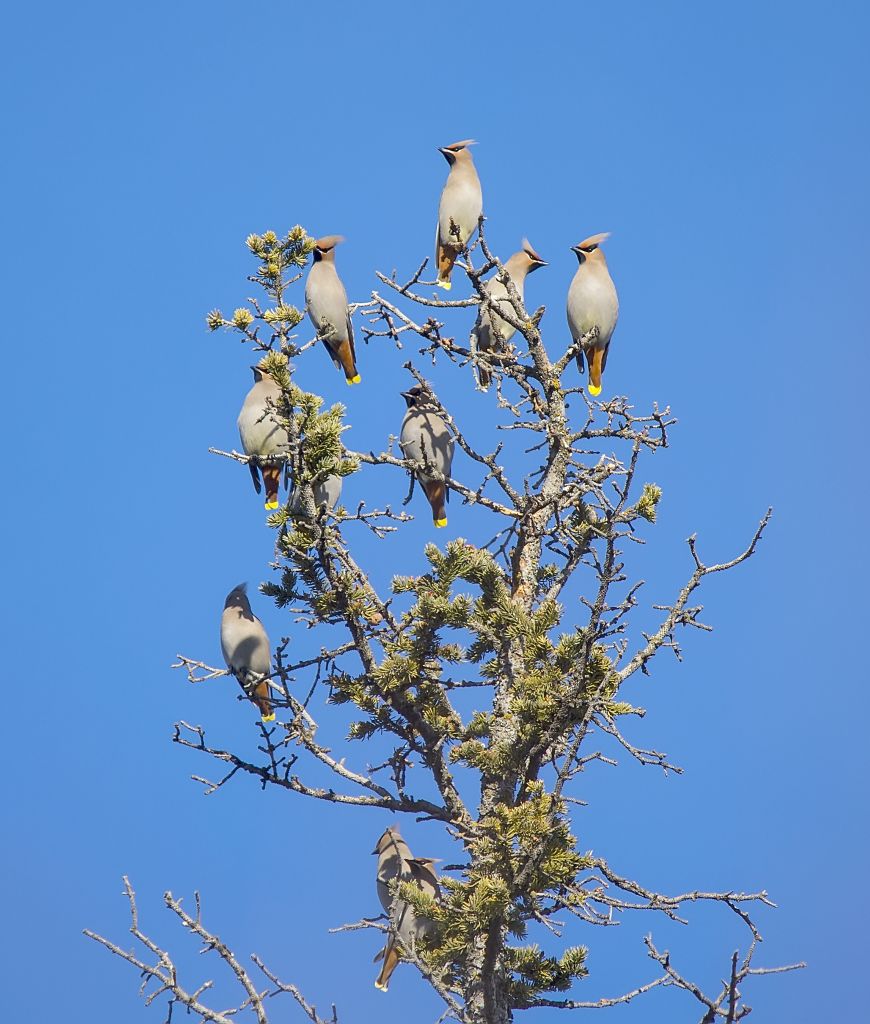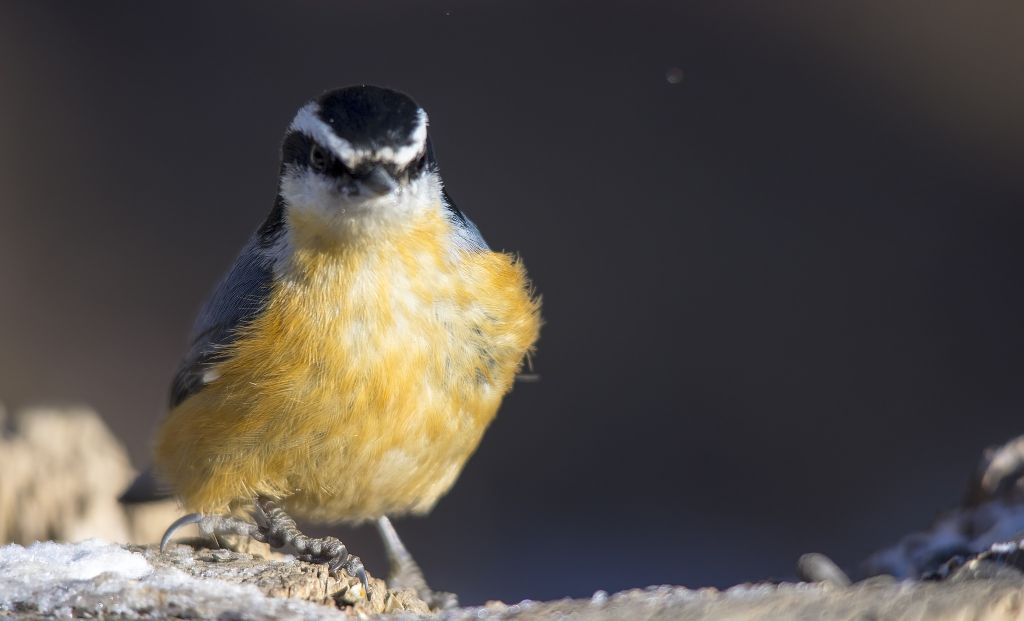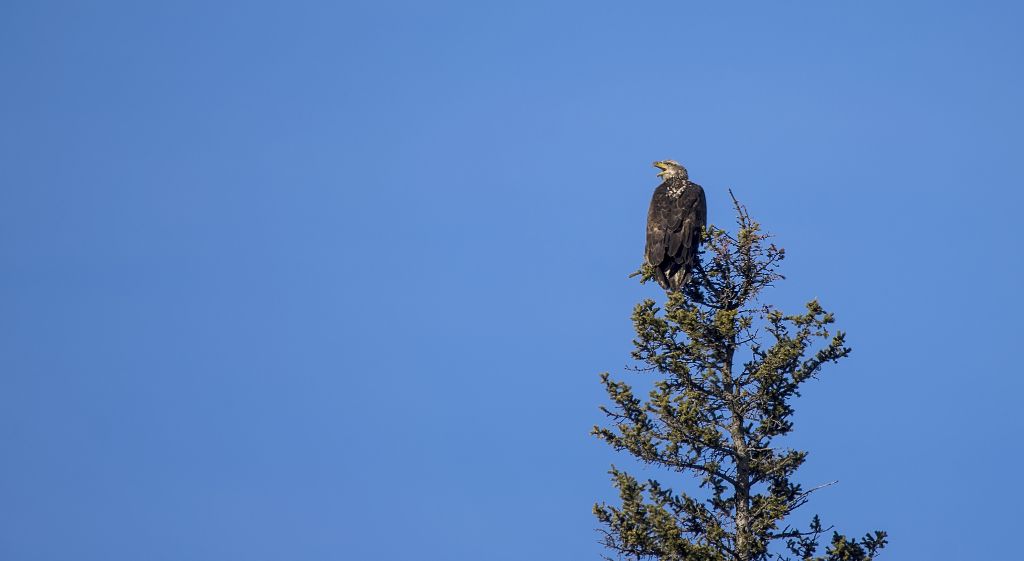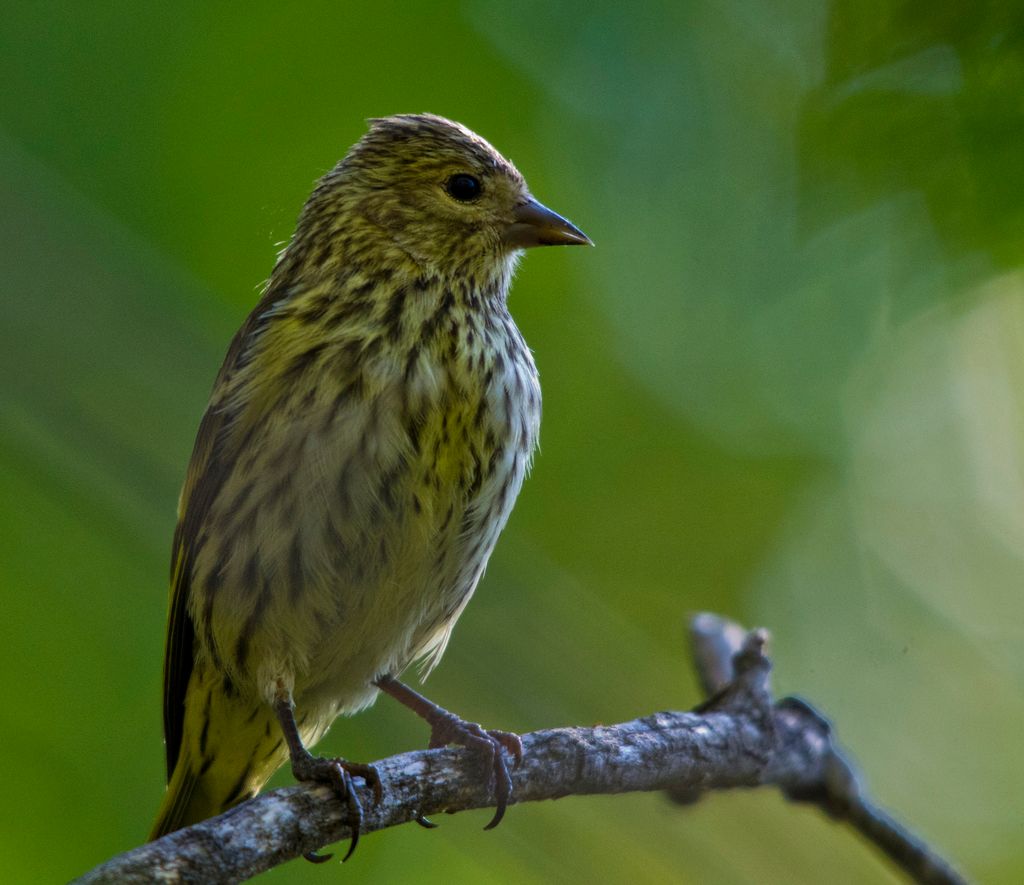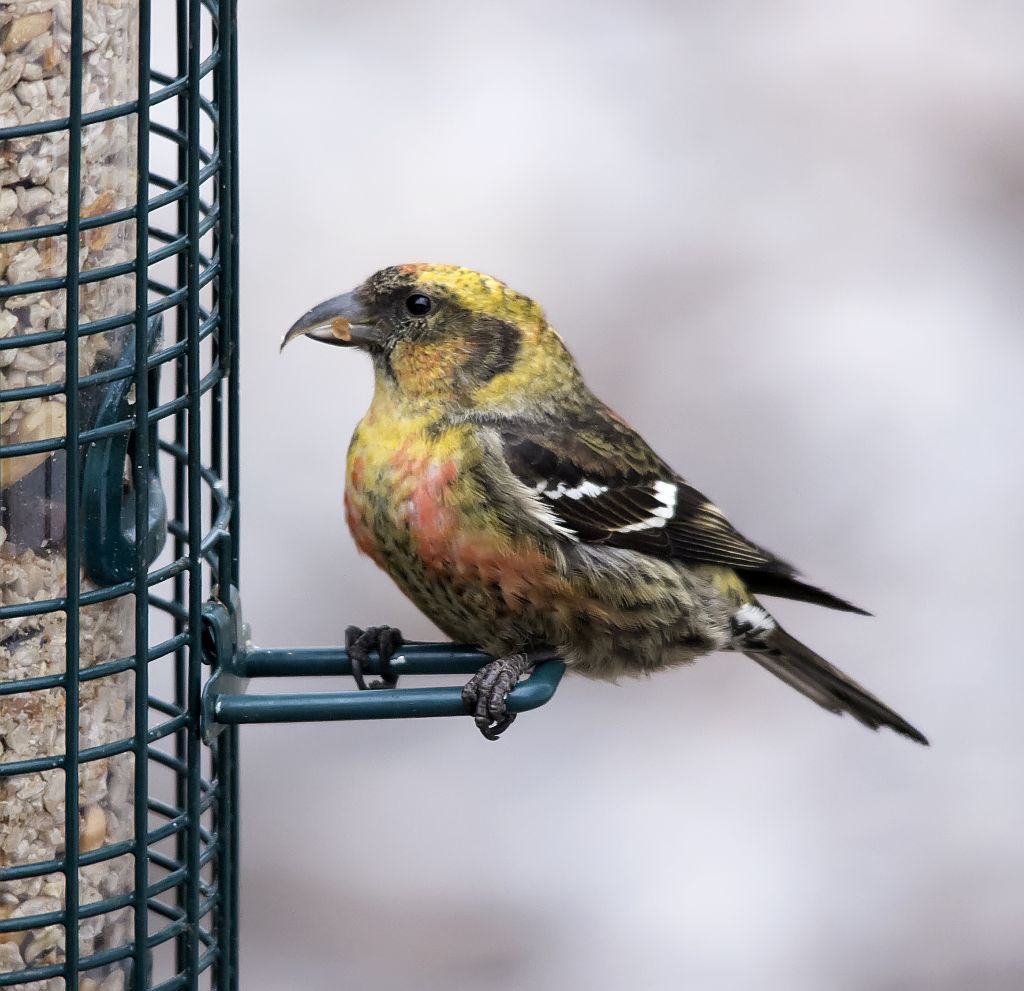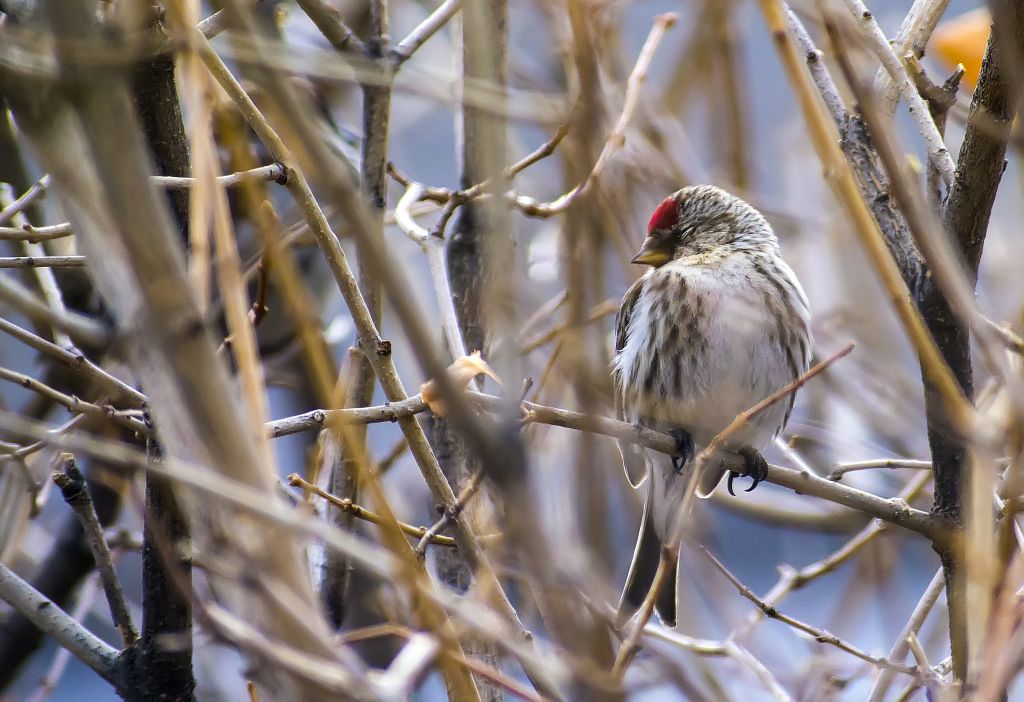Posted by Dan Arndt
For a few weeks leading up to our outing on February 22, visitors to the Weaselhead had been reporting a wide variety of winter finches here that we simply weren’t seeing elsewhere in the city on our weekly walks. Both species of redpolls, both Common and Hoary, were in attendance, and even more interesting were the arrivals of American Tree Sparrows and a lone American Goldfinch for much of the week. Add to that the numerous possibilities for Ruffed Grouse, both Boreal and Black-capped Chickadees, Pine Grosbeaks and the numerous Bohemian Waxwings, and it turned out to be a great place to visit last week.
One of the highlights of any visit to the Weaselhead are the well maintained feeders along the north slope. This is where we often find any number of birds throughout the winter, but they are especially helpful for finding those rare overwintering or early arriving birds that depend on this ready food source.
Of course, that doesn’t mean that the locals don’t take serious advantage of a free lunch as well, like this male Downy Woodpecker having breakfast at one of the stocked fence posts.
The next row of fence posts played host to a small flock of twenty or so redpolls, so named for the bright red cap or “poll” atop their head. A little unusual though were what appeared to be one, and maybe a second Hoary Redpoll in among the small flock of Common Redpolls.
Of course no trip to the Weaselhead would be complete without a visit from our obnoxiously loud Blue Jays, but unlike most visits, this guy decided to come down and investigate our group quite closely, and even allowed many of us to get good looks at him out in the open.
Down across the bridge we stopped at a log where there had been a number of birds seen earlier in the week, including American Tree Sparrows, both redpoll species, as well as Black-capped Chickadees and Dark-eyed Juncos. The juncos did seem to steal the show, and while we stopped to watch for them, we heard the tell-tale upward trill of Pine Siskins above our heads off and on. Yet another winter finch species for the year!
At the bridge across the creek we found another flock of finches, this time Pine Grosbeaks, drinking from the creek and foraging under the bridge for seeds, insects, or some other food source that we couldn’t readily see. This juvenile shows off the distinct ochre coloration signifying his transition from juvenile to adult plumage.
Further along the pathway this flock of Bohemian Waxwings paid us a visit. It’s always nice to get a good, close look at them as many times they’re simply flying overhead, or off in the distance, but their rusty vents, yellow tips to their tail feathers and bright red wingtips are always striking in contrast to the typical dull winter colors we’re used to here in Calgary.
As we walked deeper into the Weaselhead, we heard what must have been at least another half dozen juncos in the brush around us, more Pine Siskins overhead, and of course the usual Black-capped Chickadees and Red-breasted Nuthatches. This male came down to inspect one of the feeding areas, and may have even gotten a little too close for comfort!
After an unsuccessful visit to the Boreal Chickadee grove, we did have one more nice addition to our outing with this immature Bald Eagle (likely 2nd/3rd year), calling from the distant tree top, but also giving us a wary eye as we walked northward along a parallel path.
We did, in fact, get our eyes on the American Tree Sparrow, albeit briefly at the feeding station, and the extra bonus was another all too brief encounter with the male American Goldfinch at the midway point up the north slope. While I didn’t manage to get photos of either one, I would say that they were both welcome signs of warming weather and the spring to come!
As always, have a great week, and good birding!
